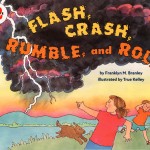
Readers & Thinkers: The 2013 Nobel Prize in Economics. Testing Market Efficiency
Posted by ludw1086 on Oct 14, 2013 in Readers & Thinkers | Comments Off on Readers & Thinkers: The 2013 Nobel Prize in Economics. Testing Market Efficiency
Dear All:
Well, who won?
The Nobel prize for economic sciences for 2013 was announced today, October 14, 2013. It went to three people Eugene Fama, Robert Shiller, and Lars Hansen.
Fama is 74 years old, born in Boston, Massachusetts and a Professor at the University of Chicago. Most of his important work was done at the University of Chicago. He obtained his BA from Tufts University and his Ph.D. in economics from the University of Chicago.
Shiller is 67 years old, and is currently a Professor at Yale University. Most of his important work was done at Yale University. He obtained his BA from the University of Michigan and his Ph.D. from MIT.
Hansen is 60 years old, and is currently a Professor at the University of Chicago. Most of his important work was done at Carnegie-Mellon and the University of Chicago. He obtained his BA from Utah State University and his Ph.D. from the University of Minnesota.
Unfortunately, my predictions for this year were incorrect. However, I’ve had Eugene Fama on my list for years. I was very surprised about Robert Shiller. There is no doubt that he’s done lots of empirical finance work and is well known, especially for his book that was released very timely before the *.bomb crash, but I did not expect him to win the Nobel prize. I was also surprised by Hansen, but for a different reason. Hansen has contributed to the econometrics field enormously, but I did not see him being paired with these other guys. I also felt that if a finance award was to be given, it should have included important theorists, such as Stephen Ross and others.
- So what did these guys do that makes them so Noble?
The Nobel committee wrote that the trio received the prize “for their empirical analysis of asset prices”.
Socrates once said “Εν οίδα ότι ουδέν οίδα”. Don Henley later paraphrased him in a song saying “The more I know, the less I understand.” That is true for finance, both theoretical and applied. We have learned so much about the behavior of market prices, but I still feel that we know so little about how market prices are really formed. These men were involved in trying to understand the behavior of market prices.
Fama is a giant in the field of finance. He is also a great guy and has personally been helpful to me in the past. Some people thought he would never win the Nobel prize, because he is mainly an empiricist. That means that rather than come up with theories about how prices should behave, he takes actual data and examines how prices do behave. Fama has done a tremendous amount of research but I will highlight what he is most known for.
Efficient Markets Definition: Although not his original idea, Eugene Fama formalized and popularized the definitions of market efficiency. He split them up into three categories, weak-form, semi-strong form, and strong form. A market is weak-form efficient if you can’t make money using technical analysis (e.g. patterns of stock prices and volume). A market is semi-strong form efficient if you can’t make money using public information (e.g. macroeconomic data, company financial statements, etc). A market is strong form efficient if you can’t make money off public or private information (e.g. insider trading). Fama spent much of his professional life testing both weak-form and semi-strong form market efficiency, as did many other researchers. The main conclusion from these studies is that markets seem to be weak-form efficient, but often times not semi-strong form efficient.
Every finance textbook has a description of the Fama concepts of informational market efficiency.
Fama-MacBeth Techniques: In finance, we basically have two main theories of asset pricing. That is, models that tell a person what the expected return of a security (e.g. stock) should be. One of them is the capital asset pricing model (CAPM) and the other is the arbitrage pricing theory (APT). Fama spent much of his time testing the CAPM. He tested whether security prices behaved according to the theoretical predictions of the model. In order to do this, he and MacBeth devised a technique to better test the CAPM with actual data. This technique was so useful that almost every empirical researcher that tests the CAPM uses a form of the Fama-MacBeth technique.
The Fama-French Factor Model: While testing the CAPM, Fama and Kenneth French found that it failed to adequately predict stock returns. They were not the first to do this, other researchers had already discovered this. However, Fama and French examined the data and performed lots of tests and made two important discoveries. One discovery was that smaller companies seemed to produce higher returns than larger companies, even after accounting for the CAPM (i.e. the stock’s beta). The other discovery was that companies with smaller price-to-book (P/B) ratios seemed to produce higher returns than companies with higher P/B ratios. That is, companies that traded at really high prices relative to their simple value were probably overvalued and would come down. That led Fama and French to form an asset pricing model along the lines of the APT and it became known as the Fama-French 3-factor model. This model, rather than the CAPM, is used by academics everywhere to test whether a market is efficient or not.
It is important to remember that this model was not theoretically driven, rather it was constructed empirically. This has led to a variety of criticisms of the model which are listed below.
Data Mining: When I was a graduate student, I worked for Fischer Black who was at Goldman Sachs. One time, while in Black’s office, I suggested that we should look at some work by Gene Fama. Black turned to me and said “We won’t do that, Fama is a data miner.” I had no idea of what Black was talking about. As soon as I got home, I read a bunch of articles to understand what he meant. Data mining is the process of taking a set of historical data and examining relationships between variables until you find one that works. What Black meant is that he believed that Fama and others had simply tested the data repeatedly until they found an anomaly (i.e. an irregular pattern in stock return data). Thus, the finding that smaller companies did better than larger companies and that low P/B did better than high P/B might have been a result of searching the historical data for a pattern. If this is what they had done, these relationships might not show up again in the future and that’s what makes data mining unreliable.
Although there is some truth to what Black said, one must also remember that Black was a big believer in theory and also secretly cherished the CAPM. In addition to this, these anomalies have continued to show up in the markets after their study was complete.
More Factors: Since the discovery of the Fama-French 3-factor model, additional factors have been added. For example, some people use a 5-factor model with a term added for momentum and liquidity. After the Fama-French model had been discovered, these additional factors were added because researchers found that the 3-factor model could not explain the momentum in stocks. That is, that stocks with high returns tend to do better for a short-period of time than stocks with a lower return. This is also true for liquidity. Less liquid stocks tend to have higher returns than more liquid stocks.
Professional Models: Even though academia mainly uses a 3-factor or 5-factor model to test for efficiency, the private sector generally uses a more advanced model of many factors to estimate expected returns and the risks of stocks.
Despite some of the shortcomings of the Fama-French factor model, there is no doubt that it enormously influenced the field of finance.
Event Studies: The Nobel committee attributed the idea of an event study testing to Fama. The first event studies, however, were done by academics in accounting (Ball and Brown (1968) and Beaver (1968)). An event study measures the reaction of a stock price to a particular event. The event could be the announcement of a stock split or the announcement of company fraud or some other event.
An event study is very useful in testing whether markets are efficient in incorporating new information into stock prices. For example, if a firm announced that it committed fraud, one might expect the stock price to drop on the day of the announcement. Event studies are widely used in the economic practice in many securities litigation cases. For example, NERA economic consulting uses more advanced forms of these techniques to assess alleged damages in class action lawsuits from company disclosures.
Shiller has done much empirical research on stock prices. His main contribution is to note deviations from market efficiency. He wrote two well known papers. One of his papers showed that stock market prices are much too volatile to be consistent with an efficient market.
What is the correct value of the stock market? One might argue that the correct price of the stock market is the price that reflects the future cash flows you will get discounted to the present. For example, if I sell you a company today that will generate $100 one year from now and then disintegrate, how much is it worth today? Probably close to $100, but there is the time value of money to consider as well. Thus, depending on how you and other investors discount next year’s $100, the value of the company could change. If the discount rate is 10%, then the company would be worth $91 today, if the discount rate is 50%, the company would be worth $67, and so on. Shiller used this basic relationship and examined the S&P 500 over time. Rather than look at actual prices, he looked at the volatility or standard deviation of prices in comparison with the future cash flows (he actually used dividends). He found that the volatility of actual prices was much too high to be explained by the volatility of future cash flows and thus suggested that it was market irrationality. One rational explanation of his result would be that the market’s discount rates are also changing rapidly.
Shiller went on to write another paper with John Campbell of Harvard to show that over the last 100 years, whenever the stock market has a high price-to-dividend ratio (P/D), the subsequent 10-year returns are very low and whenever the market has a low P/D ratio, the subsequent 10-returns of the market are very high. This apparent forecastability of the market could indicate inefficiently priced markets.
All of this research was very interesting and pointed to two possible interpretations. One is that markets are inefficient. The other is that markets are efficient, but discount rates vary over time. For example, at the end of 2008, the P/D ratio was low. We know now that subsequent market returns were very high. Did that mean market prices were irrational at the time or that people were very scared and demanded huge returns for owning the market? John Cochrane and others believe that it’s the latter.
In addition to his academic papers, Shiller is known for his book Irrational Exuberance which explained how the stock market was overvalued during the *.com mania of the late 1990s. Many other academics and practitioners believed this as well, but he had the fortune of timing his book release right before the crash. He is also the co-inventor of the Case-Shiller housing indices that help track housing prices in major metropolitan areas.
Hansen has made contributions to finance, but as I said earlier, he is more of an econometrician than a finance guy. His work in econometrics has contributed much to the economics profession. The generalized method of moments technique (GMM) has been extremely useful in estimating nonlinear systems in economics. It has been applied to finance, macroeconomics, and many other fields. He also wrote a paper with Jagannathan that has helped finance practitioners understand the boundaries for reasonable discount factors given the returns of an asset class. These are known as Hansen-Jagannathan bounds.
- So what about the Nobel choice?
The Nobel committee finally rewarded finance. The finance reward was long overdue. I feel the committee purposely avoided such a prize due to the financial crisis of 2008. Even this award was colored with statements expressing the inefficiency of markets.
As I mentioned previously, I feel that the combination of these 3 was odd. I didn’t think they naturally fit together. I would have probably put Hansen in a group of econometricians.
I also thought that they ignored important theorists in finance. One of the biggest problems in finance right now is that we are short of good theories to describe the behavior of asset prices. Most people are doing empirical research. This is partly because it’s easier (especially with the advances in technology) and partly because it’s fun.
The work of all these men have been very useful to economics and so the prize is well deserved. John Campbell, a co-author of Shiller, told me today “These are three men whose work I have been studying, learning from, and grappling with my whole professional life. I am absolutely thrilled about this award. I am also very pleased that the Nobel prize committee has chosen to honor empiricists, and a body of work that is built up from many papers that have had an enormous cumulative impact.”
The idea of looking for anomalies or deviations in market efficiency has led to an entire industry of portfolio managers called quantitative equity portfolio managers.
- So is that it?
It should always be remembered that even though these men did interesting and honorable work, there are a vast number of great financial economists that ran along with them during this entire journey. For most of us, the summary of all this research is the following: Markets are mostly efficient, but sometimes they seem very inefficient. However, even when markets are inefficient, it is extremely difficult to consistently make profits.
For more information on the winners:
http://www.nobelprize.org/nobel_prizes/economic-sciences/
Congratulations to these winners, their pursuit of knowledge, and the armies of other researchers who walked with them.
Enjoy!
Ludwig
p.s. Feel free to email me your thoughts and indicate whether you wish them to remain anonymous or not.
October 14, 2013






